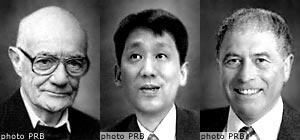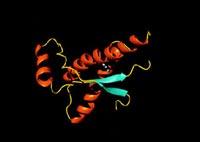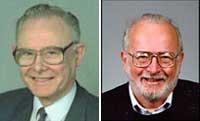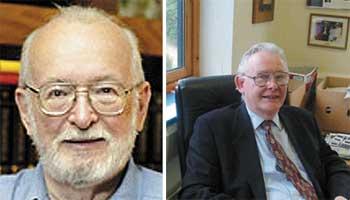Nobel Prize in Chemistry for the development of protein analysis techniques
2002/10/09 Carton Virto, Eider - Elhuyar Zientzia

These large biological molecules are in most cases proteins and are known to play a fundamental role in our body. Therefore, the analysis techniques of its composition and structure are of great interest.
The methods developed by Fenn, Koichi and Wüthrich allow current researchers to quickly identify the proteins present in a sample and know the three-dimensional structure of them. With this information, it is much easier to understand how proteins work in cells.
Mass spectrometry
Mass spectrometry distributes and identifies the molecules present in a sample based on their mass. For this purpose, the molecules of the sample to be analyzed pass to gaseous state, become ions and are passed through electric and magnetic fields. It is a very good and fast method that has become a basic pillar in the chemistry laboratories of the world. Being able to measure very small amounts of each molecule, it is widely used in antidopinic controls, food quality or air analysis.

Fundamentals of Technique XX. They were developed in the early twentieth century, Joseph J. By the hand of Thompson, but until the 70's it was not achieved that it was useful with large molecules. Until then, the proteins could not pass to gaseous state, become ions and distribute in mass.
Some advances were made in the 1970s, but the great revolution came from the hand of Fenn and Tanaka in the late 1980s. On the other hand, two methods of ionization of proteins were presented and Tanaka showed that its method was valid for the distribution of proteins by mass spectrometry. Current mass spectrometers use both methods for protein analysis.
Nuclear magnetic resonance imaging (MRI)
Kurt Wüthrich was the third winner in 2002. In the 1980s, Wüthrich developed the technique of recognizing three-dimensional structures of proteins through nuclear magnetic resonance: he invented a systematic method to allocate NMR signals to the hydrogen atoms of the protein. The structure of the first protein so studied was presented in 1985 and has since served to know the structure of thousands of proteins.
Only 15 years have passed since Fenn, Tanaka and Wüthrich presented the results of their expectations, but in December they will receive the Nobel Prize in Chemistry as an example of the importance of these investigations.

Gai honi buruzko eduki gehiago
Elhuyarrek garatutako teknologia






